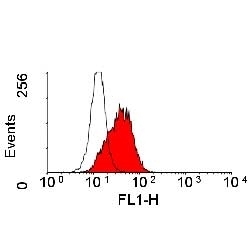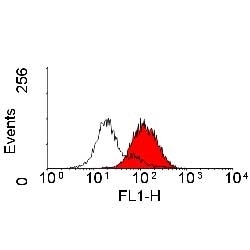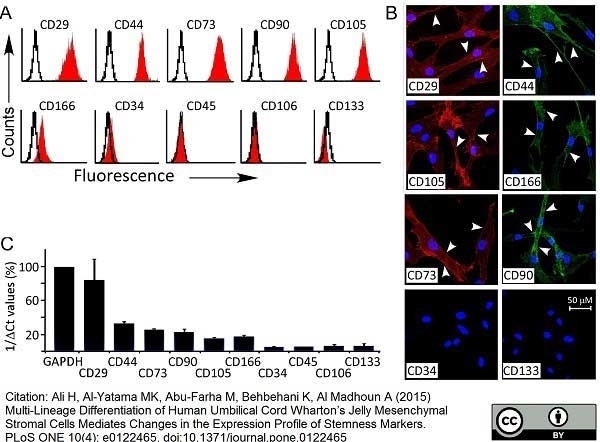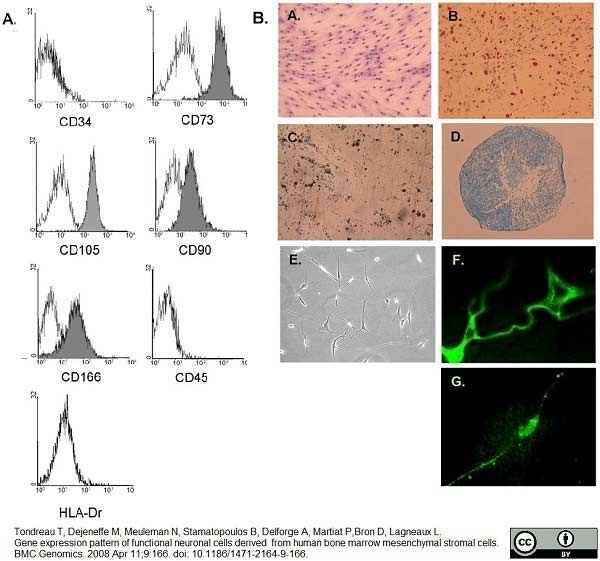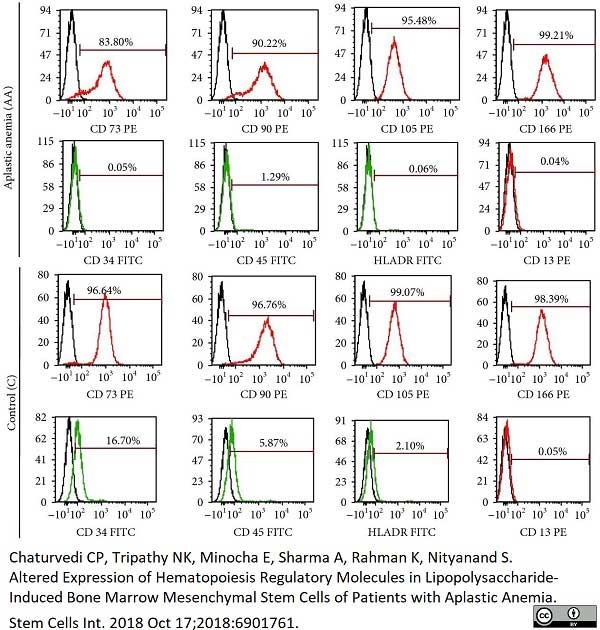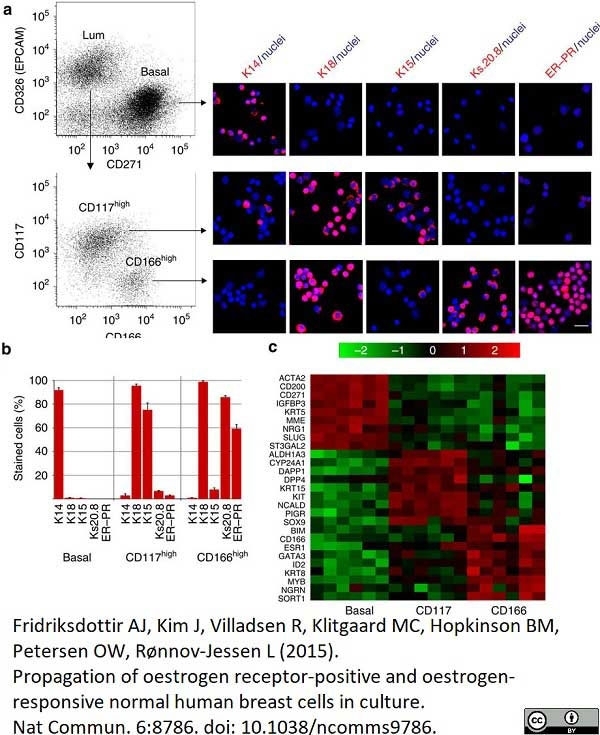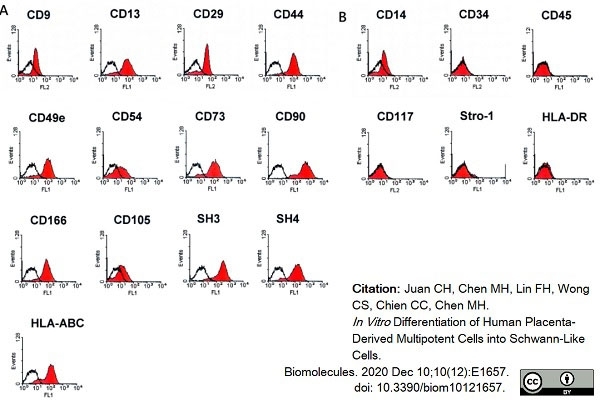CD166 antibody | 3A6







Mouse anti Human CD166
- Product Type
- Monoclonal Antibody
- Clone
- 3A6
- Isotype
- IgG1
- Specificity
- CD166
| Mouse anti Human CD166 antibody, clone 3A6 recognizes the 100 kDa adhesion molecule CD166, also known as ALCAM. CD166 is a member of the Ig superfamily and is expressed on activated T-cells, B cells and other cells including thymic epithelial cells, fibroblasts, keratinocytes and neurons. CD6 has been identified as a receptor for ALCAM (Skonier et al. 1996). Mouse anti Human CD166 antibody, clone 3A6 is reported to cross-react with CD166 on ovine tissues and provides a useful tool for the identification and characterization of ovine mesenchymal stem cells in conjunction with CD44 which is expressed by this cell lineage and the hematopoietic cell marker CD45 which is not expressed on mesenchymal stem cells (Sanjurjo-Rodríguez et al. 2017). |
- Target Species
- Human
- Species Cross-Reactivity
-
Target Species Cross Reactivity Sheep - N.B. Antibody reactivity and working conditions may vary between species.
- Product Form
- Purified IgG - liquid
- Preparation
- Purified IgG prepared by affinity chromatography on Protein A from tissue culture supernatant
- Buffer Solution
- Phosphate buffered saline
- Preservative Stabilisers
- 0.09% sodium azide (NaN3)
- Carrier Free
- Yes
- Immunogen
- Human thymic epithelial cells.
- Approx. Protein Concentrations
- IgG concentration 1.0mg/ml
- Fusion Partners
- Spleen cells from immunized mice were fused with cells of the P3X63 Ag8 myeloma cell line.
- Regulatory
- For research purposes only
- Guarantee
- 12 months from date of despatch
Avoid repeated freezing and thawing as this may denature the antibody. Storage in frost-free freezers is not recommended.
| Application Name | Verified | Min Dilution | Max Dilution |
|---|---|---|---|
| ELISA | |||
| Flow Cytometry | 1/10 | 1/50 | |
| Immunohistology - Frozen | |||
| Immunoprecipitation |
- Flow Cytometry
- Use 10μl of the suggested working dilution to label 106 cells in 100μl
| Description | Product Code | Applications | Pack Size | List Price | Your Price | Quantity | |
|---|---|---|---|---|---|---|---|
| Mouse IgG1 Negative Control | MCA928 | F | 100 Tests |
|
Log in | ||
| List Price | Your Price | ||||||
|
|
Log in | ||||||
| Description | Mouse IgG1 Negative Control | ||||||
References for CD166 antibody
-
Patel, D. D. et al. (1997) CD166 Workshop: Tissue distribution and functional analysis of antibodies reactive for CD166, a ligand for CD6.
In Leukocyte Typing IV. Kishimoto, T. et al. eds Garland publishing Inc. New York p. 461-4. -
Wang, D. et al. (2004) Proteomic profiling of bone marrow mesenchymal stem cells upon transforming growth factor beta1 stimulation.
J Biol Chem. 279 (42): 43725-34. -
Yeh, S.P. et al. (2005) Mesenchymal stem cells can be easily isolated from bone marrow of patients with various haematological malignancies but the surface antigens expression may be changed after prolonged ex vivo culture.
Leukemia. 19: 1505-7. -
Tondreau, T. et al. (2008) Gene expression pattern of functional neuronal cells derived from human bone marrow mesenchymal stromal cells.
BMC Genomics. 9:166. -
Srouji, S. et al. (2009) The Schneiderian membrane contains osteoprogenitor cells: in vivo and in vitro study.
Calcif Tissue Int. 84 (2): 138-45. -
Agha-Hosseini, F. et al. (2010) In vitro isolation of stem cells derived from human dental pulp.
Clin Transplant. 24: E23-8. -
Bhattacharya, S. et al. (2010) Toponome imaging system: in situ protein network mapping in normal and cancerous colon from the same patient reveals more than five-thousand cancer specific protein clusters and their subcellular annotation by using a three symbol code.
J Proteome Res. 9: 6112-25. -
Katsube, Y. et al. (2010) Restoration of cellular function of mesenchymal stem cells from a hypophosphatasia patient.
Gene Ther. 17 (4): 494-502.
View The Latest Product References
-
Brune, J.C. et al. (2011) Mesenchymal stromal cells from primary osteosarcoma are non-malignant and strikingly similar to their bone marrow counterparts.
Int J Cancer. 129 (2): 319-30. -
Green, L.R. et al. (2011) Cooperative role for tetraspanins in adhesin-mediated attachment of bacterial species to human epithelial cells.
Infect Immun. 79 (6): 2241-9. -
Ali, H. et al. (2015) Multi-Lineage Differentiation of Human Umbilical Cord Wharton's Jelly Mesenchymal Stromal Cells Mediates Changes in the Expression Profile of Stemness Markers.
PLoS One. 10 (4): e0122465. -
Fridriksdottir, A.J. et al. (2015) Propagation of oestrogen receptor-positive and oestrogen-responsive normal human breast cells in culture.
Nat Commun. 6: 8786. -
Holmannova, D. et al. (2017) Effects of conventional CPB and mini-CPB on neutrophils CD162, CD166 and CD195 expression.
Perfusion. 32 (2): 141-50. -
Prins, H.J. et al. (2016) Bone Regeneration Using the Freshly Isolated Autologous Stromal Vascular Fraction of Adipose Tissue in Combination With Calcium Phosphate Ceramics.
Stem Cells Transl Med. 5 (10): 1362-1374. -
Chen, F. et al. (2018) Bone morphogenetic protein 7-transduced human dermal-derived fibroblast cells differentiate into osteoblasts and form bone in vivo.
Connect Tissue Res. 59 (3): 223-232. -
Juan, C.H. et al. (2020) In Vitro Differentiation of Human Placenta-Derived Multipotent Cells into Schwann-Like Cells.
Biomolecules. 10 (12) Dec 10 [Epub ahead of print]. -
Hidalgo, L. et al. (2023) Switchable CAR T cell strategy against osteosarcoma.
Cancer Immunol Immunother. 72 (8): 2623-33.
- Synonyms
- ALCAM
- RRID
- AB_323338
- UniProt
- Q13740
- Entrez Gene
- ALCAM
- GO Terms
- GO:0005102 receptor binding
- GO:0007155 cell adhesion
- GO:0016021 integral to membrane
- GO:0007165 signal transduction
Please Note: All Products are "FOR RESEARCH PURPOSES ONLY"
View all Anti-Human ProductsAlways be the first to know.
When we launch new products and resources to help you achieve more in the lab.
Yes, sign me up